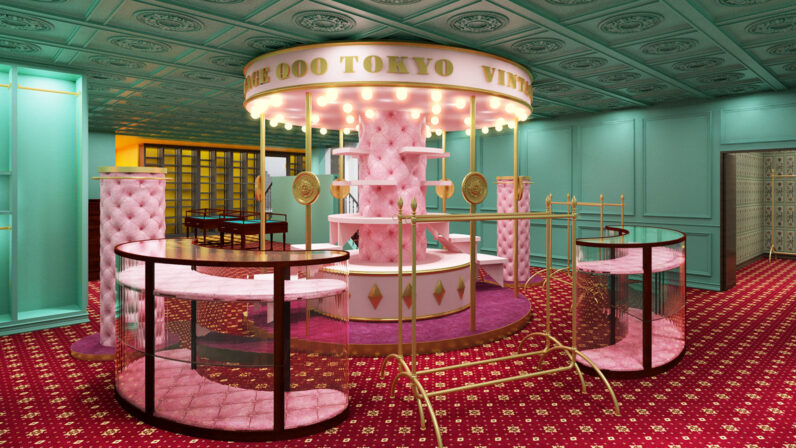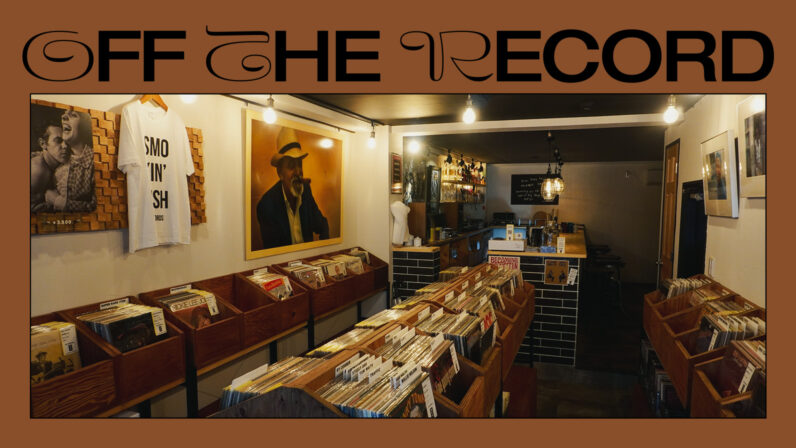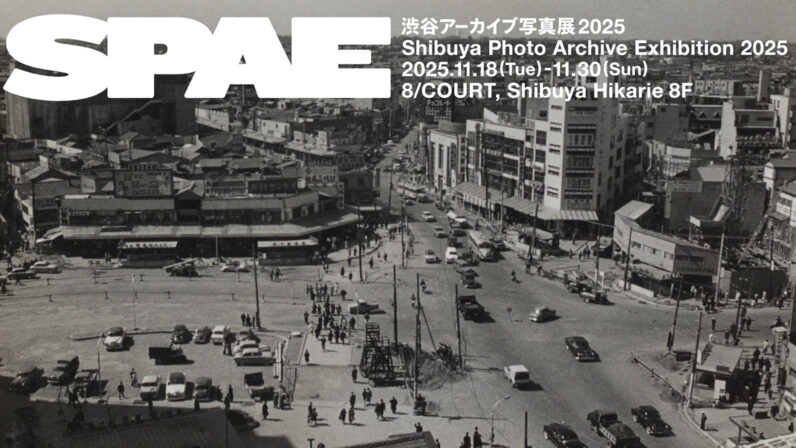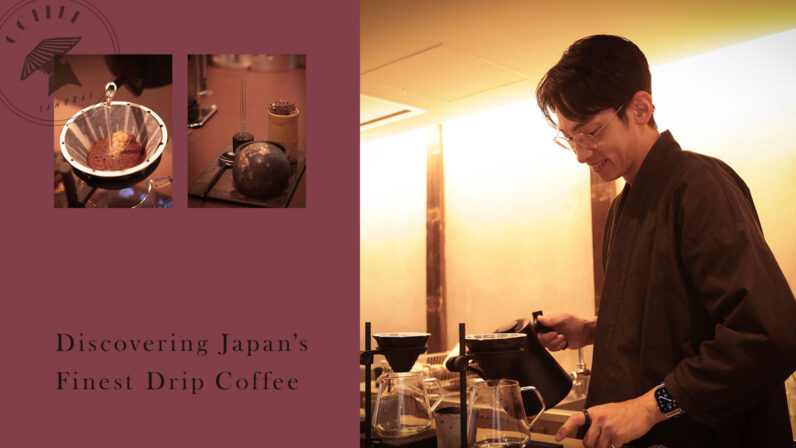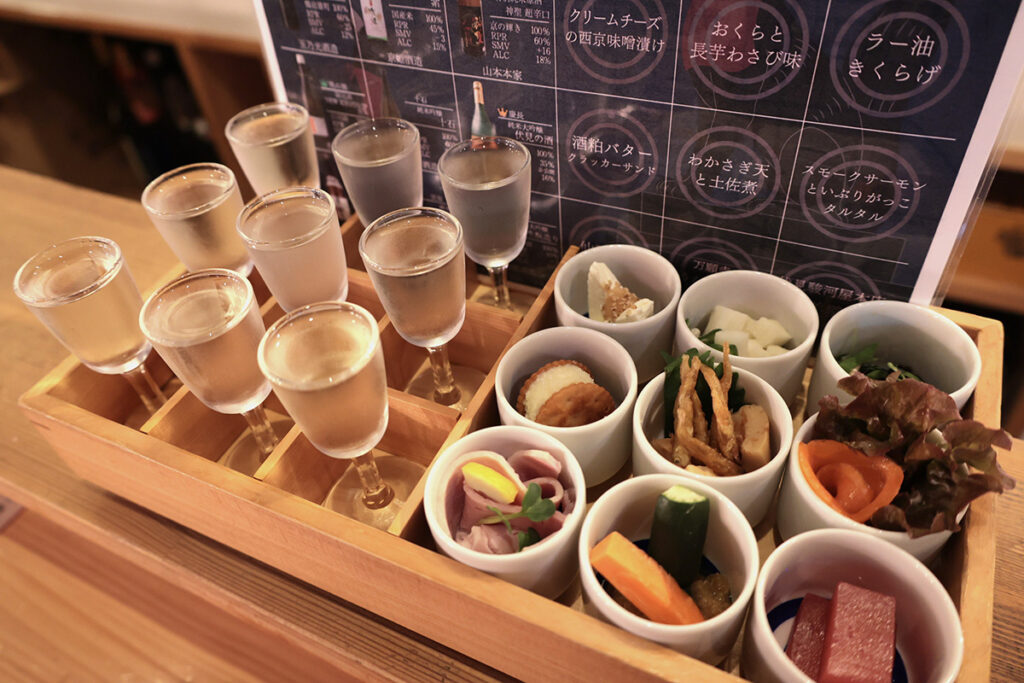
Located in the southern part of Kyoto City, Fushimi Ward is known as one of Japan’s premier sake-producing regions, ranking second nationwide in production volume. With around twenty breweries scattered throughout the area and frequent sake-related events, it attracts visitors from across Japan and overseas. A short walk from the town’s landmark, Fushimi Otesuji Shopping Street, you’ll find Fushimi Sakagura Koji.
Opened in 2016, this dining complex brings together nine different eateries. Among them, only the izakaya called Sakagura is run directly by the management company, while the others are independent tenants. The lineup is delightfully varied, including a Chinese-style izakaya, sushi, ramen, and teppanyaki, and it is the kind of place where you could easily spend an entire day without getting bored of the offerings. Curiosity got the better of me, and on a chilly autumn day, I stepped through the noren curtain.
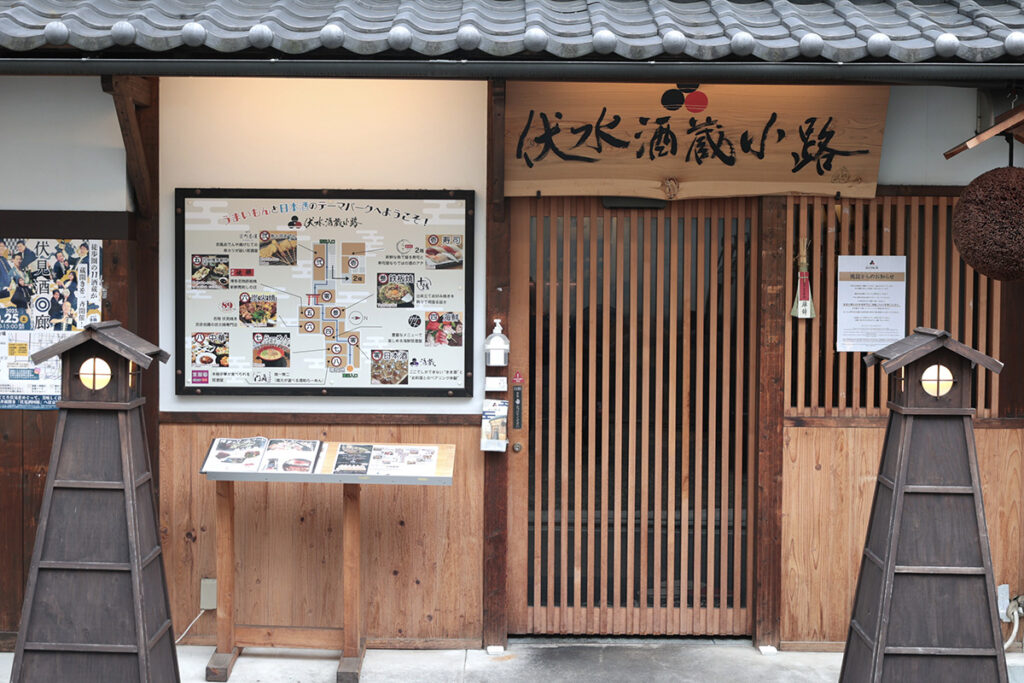
A Space That Invites You to Explore
Even though it was just past noon, the place was surprisingly busy. Mixed in with the Japanese visitors were several groups of international tourists, all chatting and enjoying drinks.
“This is a place where daytime drinking is completely welcome,” said store manager Ryuhei Kawagishi with a friendly smile. He added that many inbound tourists rely on Google Maps reviews and often come on weekday afternoons, and sometimes their numbers even surpass those of local customers.
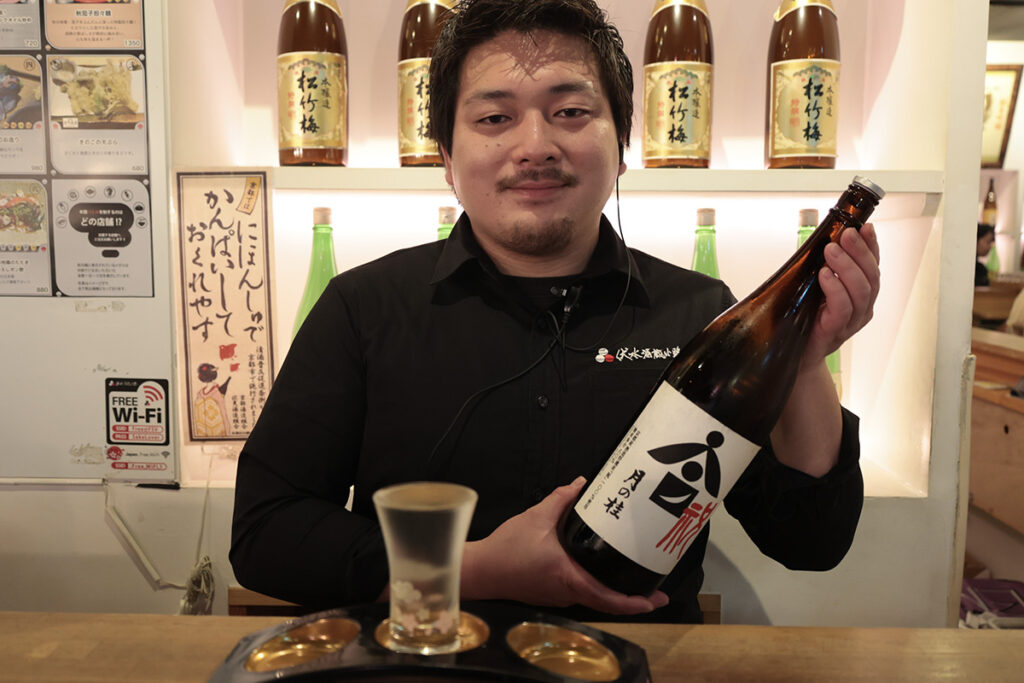
Store Manager Ryuhei Kawagishi, who oversees the facility’s management
Shifting my attention away from the buzz of the crowd, I took in the layout of the complex. Unlike a typical food stall village, the shops here feel connected, giving the impression of one cohesive space rather than several separate establishments. Ryuhei explained that the layout and atmosphere were carefully designed to encourage visitors to casually explore multiple shops in a way you don’t often see elsewhere.
“From the entrance, the seating and counters stretch deep into the space, like an eel’s bed,” he said. “Guests can enjoy a meal first and then naturally move from one shop to another for a little bar hopping.”
Instead of moving around, visitors can also order dishes from other shops while staying at a particular seat, and staff will deliver them. This system, called demai, is popular in part because all charges can be paid in a single bill.
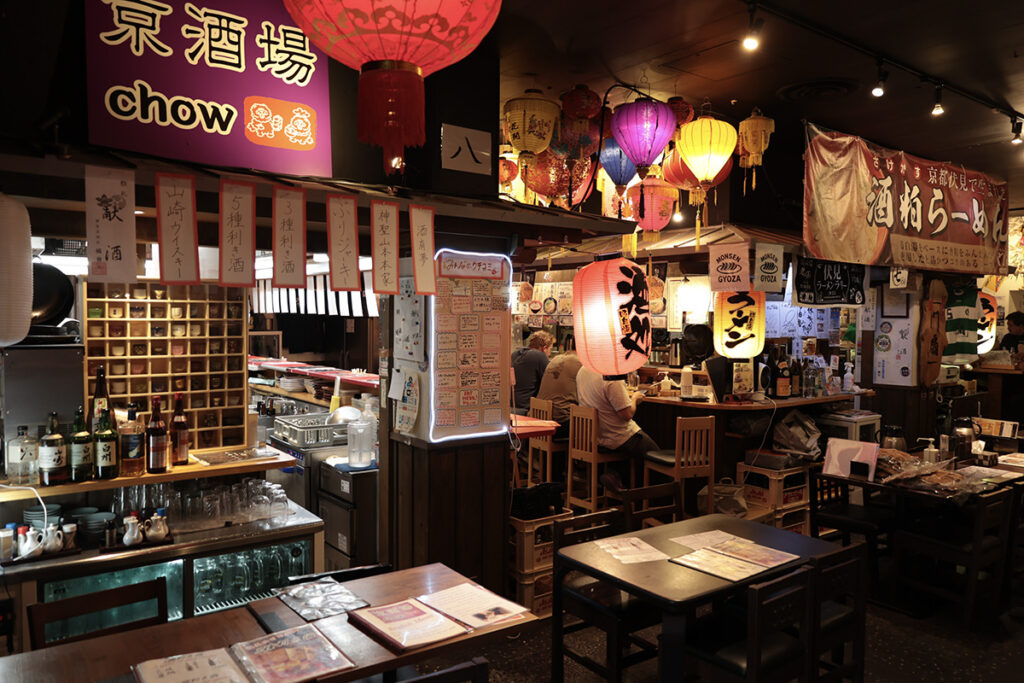
Sake Tasting Sets with Perfectly Paired Bites
I settled into the counter at Sakagura, which stretches an impressive 23 meters with gentle bends along the way. Behind the counter, shelves were lined with bottles of local sake. Looking over the menu, I was amazed by the selection. The bar offers around 120 different labels from Fushimi’s 18 breweries.
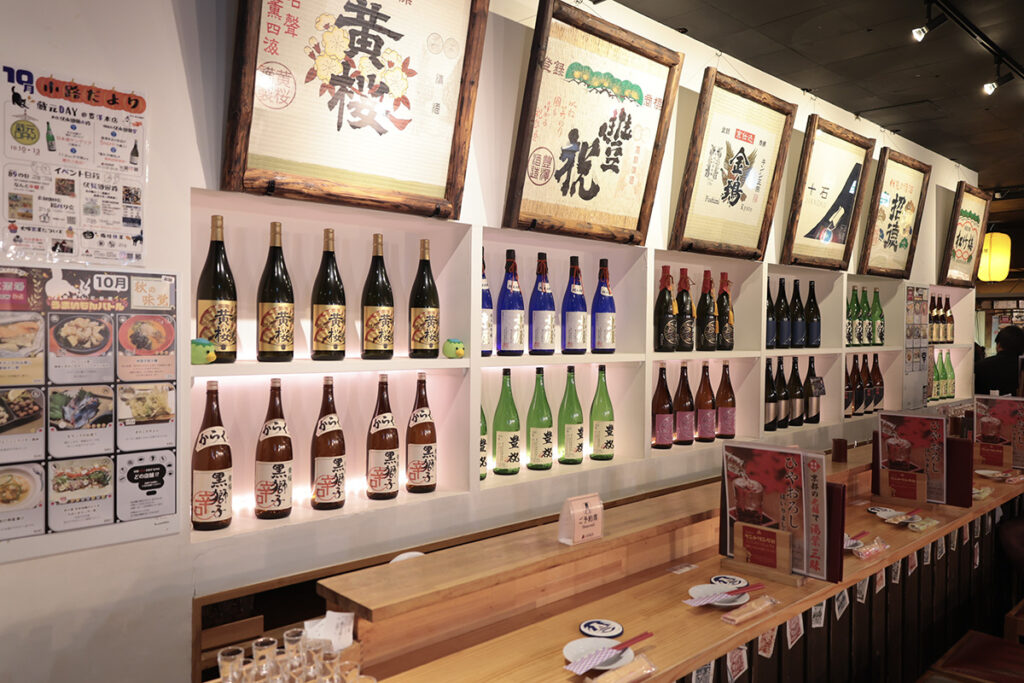
Ryuhei recommended the 18-Brewery Sake Tasting Set for those who might be stuck for choice. It features one sake selected from each of the 18 local breweries. Eighteen small glasses, each filled to the brim, are arranged on a partitioned tray, creating an impressive display. For me, though, with other plans later in the day, the full set felt a bit too ambitious.
I opted for the half-size version with nine brews instead. On this tasting tray, nine glasses sit on the left side, while nine paired appetizers are arranged on the right. Launched in 2023, it quickly became a favorite. The set comes in two types, called Kagi and Tama. Kagi features lighter, refreshing sake, while Tama offers drinks with more distinctive character. Being drawn to unique flavors, I chose the Tama set.
After about ten minutes, my order arrived. Though the glasses were small, there were so many of them, and I wondered if I could manage to finish it all.
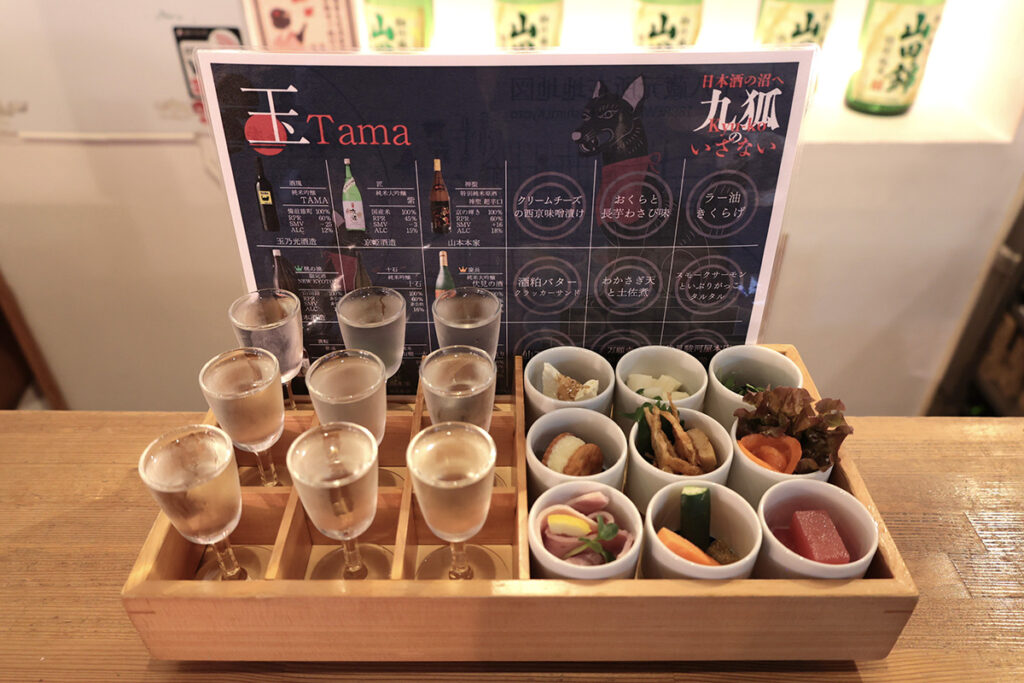
Ryuhei reassured me, “Even the full ‘18-Brewery Sake Tasting Set’ adds up to only about two go. One person can enjoy it comfortably over the course of an hour. Also, If you sip water while tasting, you won’t feel lightheaded or woozy afterward.”
*Note: In Japanese sake measurements, a go (合) is a traditional unit equal to 180 milliliters.
A Third Place to Escape and Unwind
The sake and paired appetizers in the set are meticulously thought out and arranged. Their order takes into account temperature changes over time and flavor pairings, so starting with the top-left sake and appetizer and tasting in sequence offers the best experience.
A laminated sheet on the tray lists the characteristics of each sake with numerical indicators. For example, one label, Tokubetsu Junmai Genshu Shinsei Chokarakuchi, is described as Kyono Kagayaki 100% RPR 60% SMV +16 ALC 18%. Kyono Kagayaki refers to the rice used, and 100% indicates that only this rice was used. RPR represents the rice polishing ratio, which is an indicator of sake quality. A ratio of 60% means that 40% of the rice surface was polished away, leaving 60% to brew the sake. SMV, or Nihonshudo, measures sweetness and dryness: higher numbers indicate a drier taste, lower numbers a sweeter one. A value of +16 is quite dry. Finally, ALC indicates the alcohol content.
Setting the technical details aside, I followed Kawagishi’s guidance, starting with the top-left glass and working my way through the tray, savoring each appetizer with my chopsticks. Having cut back on alcohol recently, I was pleasantly surprised by how fresh and smooth each sip felt. The creative pairings, such as cream cheese marinated in Saikyo miso and okra with grated yam and wasabi, were outstanding, with flavors that seemed to seep gently into the body.
Before long, a gentle sense of contentment washed over me. The bar’s warm, inviting atmosphere made it easy to settle in. In Japan, there’s a concept called a third place, a space outside home and work where you truly belong. I had long been searching for such a refuge, and this felt like it could be exactly that, a place to fully unwind, relax, and let the senses take over.
Fushimi Sakagura Koji
Address: 82-2 Hirano-cho, Fushimi-ku, Kyoto 612-8057, Japan
Hours: 11:00 AM – 10:00 PM
Closed: None
Website: https://fushimi-sakagura-kouji.com
instagram : @fsk_sake

